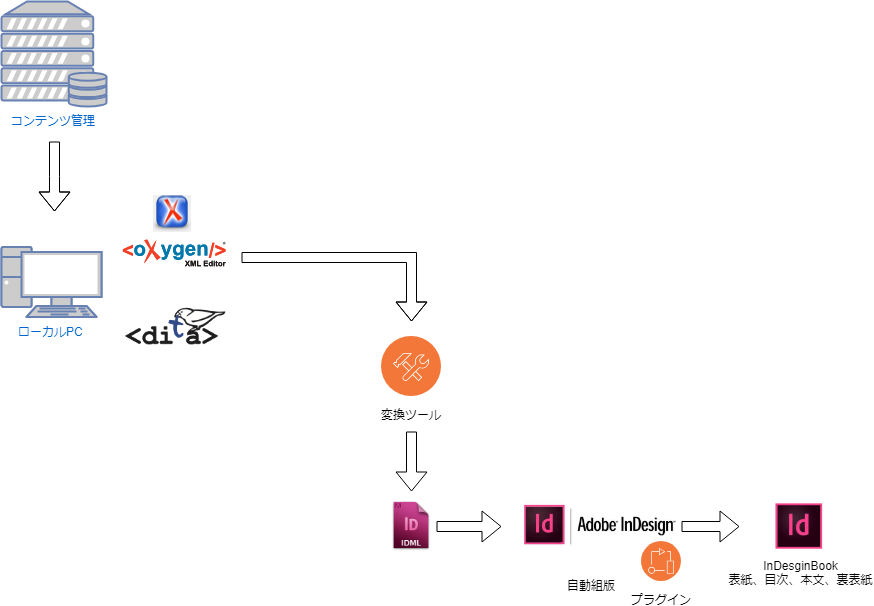DITA (Darwin Information Typing Architecture) is an international XML standard for defining the structure and content of various types of information. Developed by IBM with support from OASIS (Organization for the Advancement of Structured Information Standards), it has been contributed to the community. The 1.2 version was published as an OASIS standard in 2010.
A key feature of this architecture is the definition of “specialization” using the concept of inheritance. By customizing the basic elements provided by DITA, organizations can define an information architecture tailored to their specific needs.
At our company, we have extensive experience in developing automated documentation systems. We specialize in DITA definitions using bookmaps, one form of specialization, and also support standard map specifications.

Supported Products
In addition to FrameMaker and InDesign, we provide implementation support and assistance for DITA-compliant CCMES, such as XDocs, and lightweight CCMS solutions like DITAToo.
Development Achievements
We have transformed unstructured InDesign data into DITA format. In another project, we utilized the DITA-OT plugin to convert DITA data created in Oxygen into XML that InDesign can process for automated layout.
By leveraging the pre-defined DITA format in FrameMaker, we converted InDesign data into structured data. Additionally, operators can use tools like Oxygen to manually markup and convert DITA data from scratch. We also developed structured applications corresponding to defined DITA data, enabling effective layouts for print. Our solutions support print layouts using DITA-OT as well.
Managing unstructured data in the internationally recognized DITA format allows for valuable asset management. Regardless of the original data format, we ensure optimal conversion to DITA, achieving structured data compliant with international standards. Please consult us for reusability of the converted DITA data.
